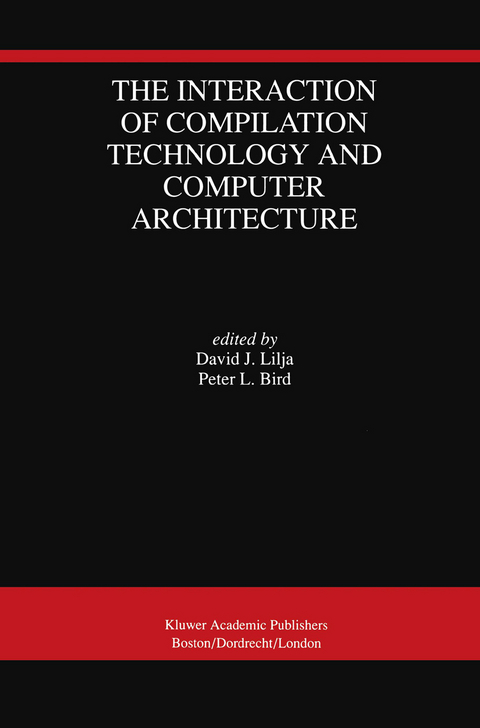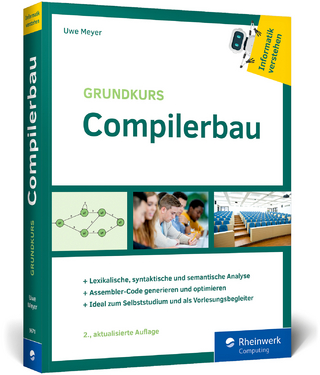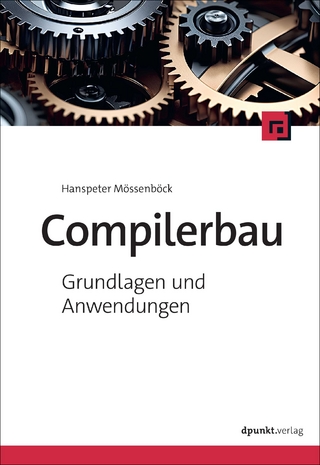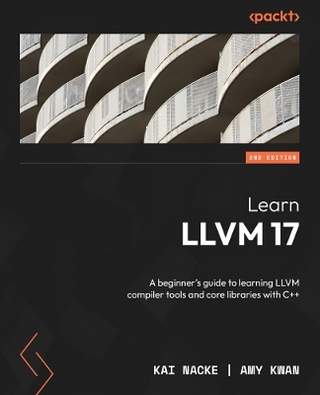
The Interaction of Compilation Technology and Computer Architecture
Springer-Verlag New York Inc.
978-1-4613-6154-1 (ISBN)
In brief summary, the following results were presented in this work: • A linear time approach was developed to find register requirements for any specified CS schedule or filled MRT. • An algorithm was developed for finding register requirements for any kernel that has a dependence graph that is acyclic and has no data reuse on machines with depth independent instruction templates. • We presented an efficient method of estimating register requirements as a function of pipeline depth. • We developed a technique for efficiently finding bounds on register require ments as a function of pipeline depth. • Presented experimental data to verify these new techniques. • discussed some interesting design points for register file size on a number of different architectures. REFERENCES [1] Robert P. Colwell, Robert P. Nix, John J O'Donnell, David B Papworth, and Paul K. Rodman. A VLIW Architecture for a Trace Scheduling Com piler. In Architectural Support for Programming Languages and Operating Systems, pages 180-192, 1982. [2] C. Eisenbeis, W. Jalby, and A. Lichnewsky. Compile-Time Optimization of Memory and Register Usage on the Cray-2. In Proceedings of the Second Workshop on Languages and Compilers, Urbana l/inois, August 1989. [3] C. Eisenbeis, William Jalby, and Alain Lichnewsky. Squeezing More CPU Performance Out of a Cray-2 by Vector Block Scheduling. In Proceedings of Supercomputing '88, pages 237-246, 1988. [4] Michael J. Flynn. Very High-Speed Computing Systems. Proceedings of the IEEE, 54:1901-1909, December 1966.
1 Introduction and Overview.- 1 Introduction.- 2 Overview of the Book.- 3 Conclusion.- 2 Architectural Support for Compile-Time Speculation.- 1 Introduction.- 2 Speculative Execution.- 3 Global Instruction Scheduling.- 4 Experimental Results.- 5 Conclusion.- 3 Register Requirements for High Performance Code Scheduling.- 1 Buffer Space is Critical.- 2 Cyclic Scheduling.- 3 Register Requirements For Cyclic Schedules.- 4 Architectural Models.- 5 Bounding Register Requirements.- 6 Experiments.- 7 Summary.- 4 Data Dependencies in Decoupled, Pipelined Loops.- 1 Introduction.- 2 Architecture Overview.- 3 Background.- 4 Compiling Common Sub-Expressions.- 5 Loop Carried Dependencies.- 6 Conclusions.- 5 The Effects of Traditional Compiler Optimizations on Superscalar Architectural Design.- 1 Introduction and Background.- 2 Methods And Tools.- 3 Performance Metrics.- 4 Experimental Evidence.- 5 Conclusion.- 6 Dynamic Program Monitoring and Transformation Using the Omos Object Server.- 1 Introduction.- 2 OMOS and Linker Technology.- 3 Server Architecture.- 4 OMOS Program Monitoring.- 5 Reordering Strategies.- 6 Fragment Reordering.- 7 The Results.- 8 Related Work.- 9 Future Work.- 10 Conclusion.- 7 Performance Limits of Compiler-Directed Multiprocessor Cache Coherence Enforcement.- 1 Introduction.- 2 Coherence Schemes.- 3 Previous Work.- 4 Performance Comparisons.- 5 Conclusion.- 8 Compiling hpf for Distributed Memory Mimd Computers.- 1 Introduction.- 2 HPF Language.- 3 HPF Compiler.- 4 Partitioning.- 5 Communication.- 6 Run-time Support System.- 7 Optimizations.- 8 Experimental Results.- 9 Summary of Related Work.- 10 Summary and Conclusions.- 9 The Influence of the Object-Oriented Language Model on a Supporting Architecture.- 1 Introduction.- 2 Overview of the MUSHROOM architecture.- 3 Compilation technology.- 4 Software control of low-level features.- 5 Experiences designing the prototype.- 6 Summary and conclusions.- 10 Project Triton: Towards Improved Programmability of Parallel Computers.- 1 Introduction.- 2 Modula-2*.- 3 Optimization Techniques and Hardware Recommendations.- 4 Triton/1.- 5 Status and Future.- 6 Conclusion.
| Zusatzinfo | VIII, 285 p. |
|---|---|
| Verlagsort | New York, NY |
| Sprache | englisch |
| Maße | 155 x 235 mm |
| Themenwelt | Mathematik / Informatik ► Informatik ► Betriebssysteme / Server |
| Mathematik / Informatik ► Informatik ► Programmiersprachen / -werkzeuge | |
| Informatik ► Theorie / Studium ► Compilerbau | |
| ISBN-10 | 1-4613-6154-0 / 1461361540 |
| ISBN-13 | 978-1-4613-6154-1 / 9781461361541 |
| Zustand | Neuware |
| Haben Sie eine Frage zum Produkt? |
aus dem Bereich


